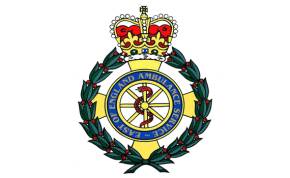
The Critical Care Desk, based in the Tactical Operations Centre (TOC) in Chelmsford, is routinely staffed by a HEMS Paramedic 24/7 and a Critical Care Desk Dispatcher.
We also have the Incident Command Desk (ICD) which is also staffed 24/7. All specialist critical care assets are coordinated centrally between the two desks, screening all 999 calls into EEAST for deployment suitability. The clinicians can listen into 999 calls, can interrogate and/or speak directly to the patient where practicable.
Unfortunately, not all patients who would benefit from critical care support are picked up in this way, which is why it is essential that all EEAST staff feel able to contact the CCD if they feel their patient may benefit from critical care support. Clinicians will also call EEAST resources on scene, seeking clinical updates with the patient condition, please provide the requested information where possible, even if you are only able to provide minimal information at the time. It is also vital that, where needed, critical care assets are deployed as soon possible after the incident happens, as sometimes the critical care resource may have a significant distance to travel to scene.
We have three HEMS services that provide five medical teams, each providing Critical Care for the region by land and air. They are staffed by a Critical Care Paramedic (CCP) and a Doctor.
It is worth remembering that, although the team will always try to reach you by aircraft, there are factors that may inhibit the flight therefore the teams will opt to go by RRV, which may delay the ETA to scene
In addition to HEMS, we have three (soon to be four) BASICS schemes that provide both team and solo critical care resources who cover most of the region. BASICS schemes are staffed by volunteer clinicians who either do pre-planned shifts on a scheme car or by booking on from home, responding in their own cars to provide critical care. These clinicians have variety of enhanced care skills. Most BASICS clinicians can provide level two enhanced care skill such as procedural sedation, surgical skills, pacing/cardioversion, and enhanced pharmaceutical care. However, some clinicians/teams can also provide level three enhanced care which is the same as the HEMS teams within the region. The schemes also provide some paramedic responses.
When asked for information or providing update to CCD regarding a patient the team will process this and task a suitable resource to assist you.
The Critical Care Desk also liaises with the Network Coordination Service (NCS) reporting all the Major Trauma Positive calls within EEAST. This is a vital function of the CCD as it allows the network to coordinate ongoing care for the patient once they arrive at TU/MTC and relies on clinical updates regarding the trauma triage tool status from scene. Outcomes of all triage tool assessments (positive or negative) should be reported on ch202 to CCD.
Below is a list of incidents that Critical Care can help with:
Trauma Patients
Medical Patients
The list above is not limited. Please call 202 to discuss ANY patient you feel may benefit from critical care support, the clinician may be able to assist you with advice as well as additional resources.
To contact the Critical Care Desk call 01245 444496 or change your talk group to channel 202.
Friday 29 October 2021